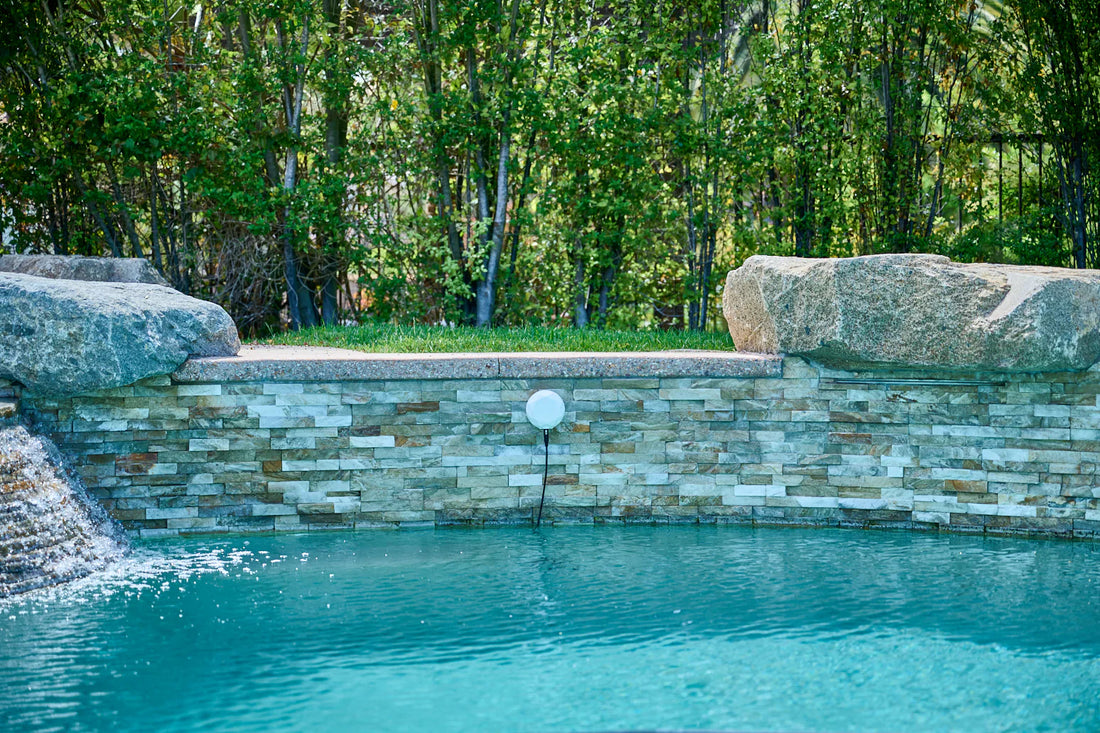Maintaining the right pH level in your pool is important for keeping swimmers safe and comfortable. A balanced pH level helps prevent skin and eye irritation and protects your pool equipment from damage. This article focuses on how to lower the pH in your pool quickly, providing you with practical steps and alternative methods to achieve optimal water quality.
We'll explore various ways to manage pH and alkalinity levels, including chemical-free options for those seeking environmentally friendly solutions. Whether you're a residential pool owner or manage a commercial spa, understanding how to adjust your pool's pH efficiently is essential for maintaining a pleasant swimming environment.
Understanding Pool pH Levels
pH levels are a measure of how acidic or basic your pool water is, on a scale from 0 to 14. A pH of 7 is neutral, while levels below 7 indicate acidity, and levels above 7 indicate alkalinity. For pool water, the ideal pH range is between 7.2 and 7.8. Maintaining this range is vital because it ensures the effectiveness of chlorine, prevents corrosion of pool equipment, and provides a comfortable swimming experience.
pH and alkalinity are closely linked in pool water chemistry. High pH levels can lead to scaling on pool surfaces and cloudy water, while low pH levels can cause corrosion and skin irritation. For more detailed information on pool water chemistry, you can refer to this helpful resource on Understanding Pool Water Chemistry - CHEMTROL.
How to Lower pH in Pool Quickly and Effectively
If you need to lower the pH in your pool quickly, there are several practical steps you can take. Here’s how you can do it:
- Use Muriatic Acid: This is a common and effective method. Carefully add the recommended amount based on your pool size and current pH level.
- Sodium Bisulfate: Also known as dry acid, it's easier to handle than liquid acid and works well to lower pH.
- Aeration: Increase the pool’s aeration by turning on water features like fountains or waterfalls. This can help lower both pH and alkalinity over time.
- Test Regularly: Use the Crystal Water Monitor to keep a close eye on your pool’s pH levels. Regular monitoring ensures you can make timely adjustments.
Remember, when adjusting pH, it’s important to also consider the alkalinity of your pool, as these two factors are closely linked. Regular checks with the Crystal Water Monitor can help maintain both pH and alkalinity at optimal levels.
How to Lower pH in Pool Without Chemicals
If you prefer to lower the pH in your pool without using chemicals, there are some environmentally friendly options:
- Vinegar: Adding vinegar can help lower pH naturally, though it may require larger quantities for noticeable effects.
- Lemon Juice: Another natural acid, lemon juice can be used similarly to vinegar, but it may not be practical for larger pools.
- Aeration: As mentioned earlier, aeration can help reduce pH levels naturally by increasing carbon dioxide release.
- For more earth-friendly alternatives, explore 4 Earth Friendly Alternative Pool Water Treatments.
These methods are not only gentle on the environment but also provide a safe way to manage your pool’s pH without relying on traditional chemicals.
Effects of High pH Levels
Maintaining the right pH level in your pool is important for your equipment's lifespan and swimmer comfort. When the pH level is too high, it can lead to several issues:
- Equipment Damage: High pH levels can cause calcium buildup in your pool's plumbing and filtration systems. This can lead to blockages and reduced efficiency, leading to expensive repairs or replacements.
- Skin and Eye Irritation: Swimmers may experience dry, itchy skin and red, irritated eyes. High pH levels can also reduce the effectiveness of chlorine, leading to inadequate sanitation.
- Cloudy Water: A high pH level can cause the water to become cloudy, making the pool less visually appealing and potentially unsafe if the bottom is not visible.
To understand more about the impact of water quality on health, you can refer to this resource on Swimming Pools - Water Quality.
Conclusion and Next Steps
Lowering the pH in your pool quickly and safely is essential for maintaining a pleasant swimming environment and protecting your pool equipment. By following the steps outlined in this article, you can effectively manage your pool's pH levels.
For a hassle-free experience, consider using the Crystal Water Monitor. This smart device continuously tracks your pool's water chemistry, giving you real-time updates and helpful alerts. With the Crystal Monitoring Subscription, you'll enjoy continuous support, push notifications, and chemical dosing recommendations to keep your pool in perfect condition.
Remember, maintaining balanced pH levels not only enhances swimmer comfort but also extends the life of your pool equipment. With Crystal Water Monitor, you can enjoy peace of mind knowing your pool is always in optimal condition.

